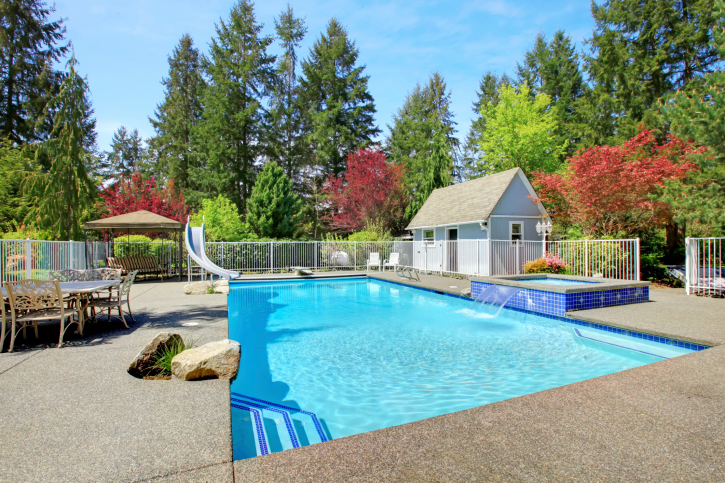As the chill of winter approaches, properly closing your pool becomes a necessary task that ensures its longevity and ease of reopening in the spring. Whether you’re a seasoned homeowner or new to pool maintenance, this guide on how to close a pool will provide you with the essential steps and tips. Let’s dive in!

Why You Need to Close Your Pool
Closing your pool for the winter is crucial to prevent damage caused by freezing temperatures. Properly winterizing your pool protects its structure and equipment, saving you from costly repairs and extending the life of your investment.

When to Close Your Pool
The ideal time to close your pool is when the water temperature consistently stays below 65 degrees Fahrenheit. Colder water inhibits algae growth, making your closing process more straightforward and effective.

Gathering Your Supplies
Before you begin, gather all necessary supplies. These include:
- Pool cover
- Winterizing chemicals
- Pool brush and vacuum
- Skimmer cover
- Air compressor or shop vacuum
- Water bags or other anchoring mechanisms
Pool Cover
Investing in a high-quality pool cover is essential. It keeps debris out and helps maintain the balance of chemicals in your pool.
Winterizing Chemicals
These chemicals prevent algae growth and maintain water clarity throughout winter.
Step-by-Step Guide on How to Close a Pool
1. Clean Your Pool
Start by thoroughly cleaning your pool. Brush the walls, vacuum the floor, and skim the surface to remove any debris.
2. Balance the Water Chemistry
Test and adjust the water chemistry to ensure it is balanced. Properly balanced water protects the pool from damage during the winter months.
3. Add Winterizing Chemicals
Introduce winterizing chemicals into the pool. Follow the instructions on the products for the best results.
4. Lower the Water Level
Using your pool pump, lower the water level below the skimmer. This step is crucial to prevent damage from freezing.
5. Drain Pool Equipment
Completely drain water from the pool’s plumbing, filter, and heater. Use an air compressor or shop vacuum to blow out any remaining water.
6. Install Skimmer Cover
Cover the skimmer to prevent water from entering and freezing. This will protect the skimmer and plumbing from ice damage.
7. Cover the Pool
Place the pool cover over the pool and secure it with water bags or other anchoring mechanisms. Ensure the cover is tight and free of gaps to prevent debris entry.
Maintaining Your Pool Cover
Inspection
Regularly inspect your pool cover for tears or weaknesses. Promptly repair any damage to maintain its effectiveness.
Removing Debris
Keep the cover free of leaves, twigs, and other debris. Use a leaf blower or a soft broom to clear the surface as needed.
Opening Your Pool in Spring
When spring arrives, follow these steps to reopen your pool:
- Remove the pool cover and clean it thoroughly.
- Reconnect and inspect all pool equipment.
- Refill the pool to its regular level.
- Balance the water chemistry.
- Start the filtration system and allow it to run for at least 24 hours before swimming.
Frequently Asked Questions
What happens if I don’t close my pool for winter?
If you don’t close your pool, it can lead to damage caused by freezing water, algae growth, and expensive repairs.
Can I close my pool myself?
Yes, you can close your pool yourself by following the steps outlined in this guide. However, if you’re unsure, hiring a professional is always a good option.
When should I open my pool in the spring?
Open your pool when the water temperature consistently rises above 65 degrees Fahrenheit and before significant algae growth begins.
As an Amazon Associate, I earn from qualifying purchases.

